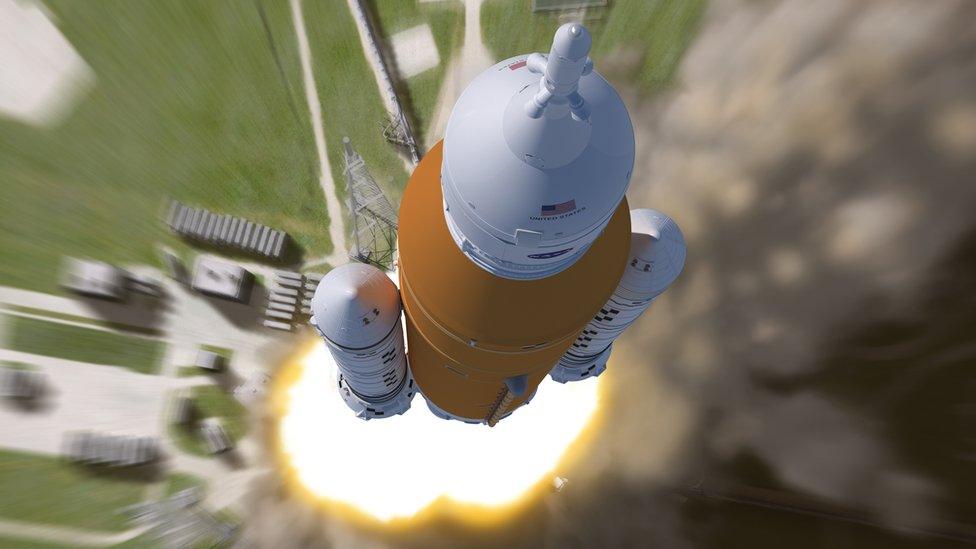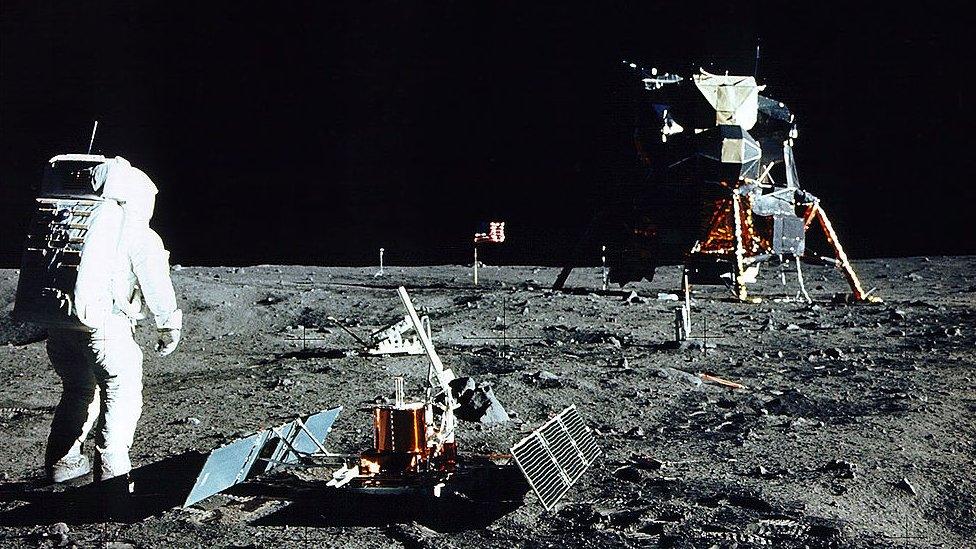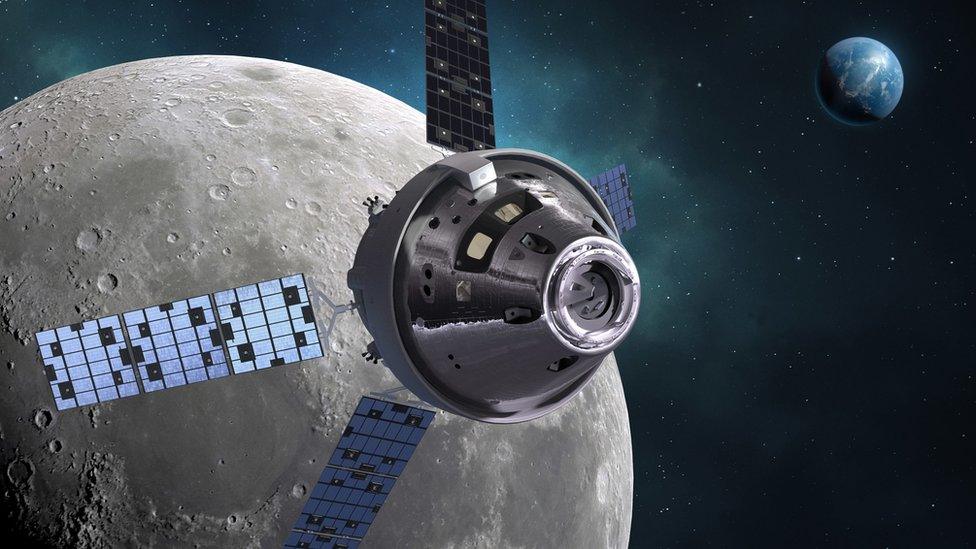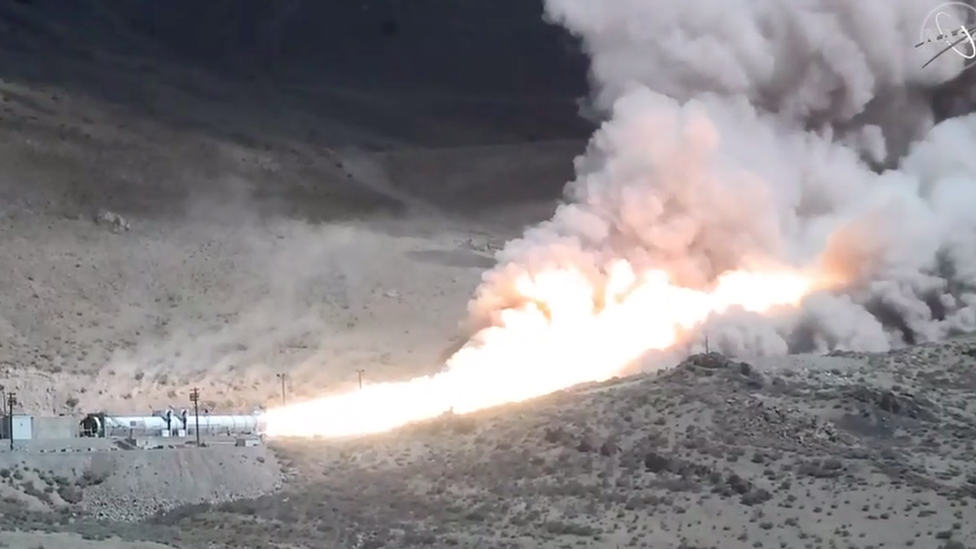Nasa has completed assembly of its twin 'megarocket' boosters
- Published
- comments

The most powerful rocket in the world is one step closer to blast off.
Nasa has completed assembly of the twin rocket boosters that will power its Space Launch System (SLS), the rocket that will return astronauts to the Moon.
Engineers at the Kennedy Space Centre in Florida, USA, have spent several months stacking the booster rockets' 10 segments.
The maiden flight of the SLS is currently scheduled for late 2021.
This will see the rocket launch an uncrewed spacecraft on a trip around the Moon to conduct an evaluation of the system and check it all works correctly.
Moon mission one step closer

Animation: A computer-generated artwork of how the Space Launch System (SLS) will look during lift-off.
Getting astronauts to the Moon requires a monster rocket.
President Trump set a target date of 2024 for the US space agency to perform the first human landing on the Moon since 1972, but incoming President Joe Biden has not confirmed if this timeline is still accurate.
In the meantime, the team at Nasa will continue its testing of the system, with a 'hotfire' test scheduled in mid-March.
This will involve the firing of all four engines for a full eight minutes - the time it takes for the SLS to reach space.
Engineers have already attempted one hotfire test in January, but this was aborted after just a minute because of an issue with the system hydraulics.
"Stacking the solid rocket boosters is a huge milestone"
The newly assembled boosters will supply 75% of the thrust at lift-off, powering the rocket toward the Moon.
It will be capable of producing up to 8.8 million pounds of thrust, making it 15% more powerful than the Saturn V rocket that powered the Apollo lunar missions.
Engineers are massively excited by the completion of the latest stage after years of work.
"Stacking the solid rocket boosters is a huge milestone," said senior vehicle operations manager Cliff Lanham.
"It means the rocket is being assembled on the mobile launcher and we are in the final stages of a long journey - getting to launch Artemis 1."
Artemis is the name of the space programme to return Americans to the Moon.
In Greek mythology, Artemis was the daughter of Zeus and Leto - and the twin sister of Apollo - the name of the previous Moon mission programme.

Man's first landing on the Moon occurred July 20, 1969 as Lunar Module "Eagle" touched down gently on the Sea of Tranquillity on the east side of the Moon.
- Published23 September 2020

- Published3 September 2020

- Published30 April 2020

